Reference this Baking with Yeast Guide whenever you work with baker’s yeast. I include practical answers to all of your common yeast questions.
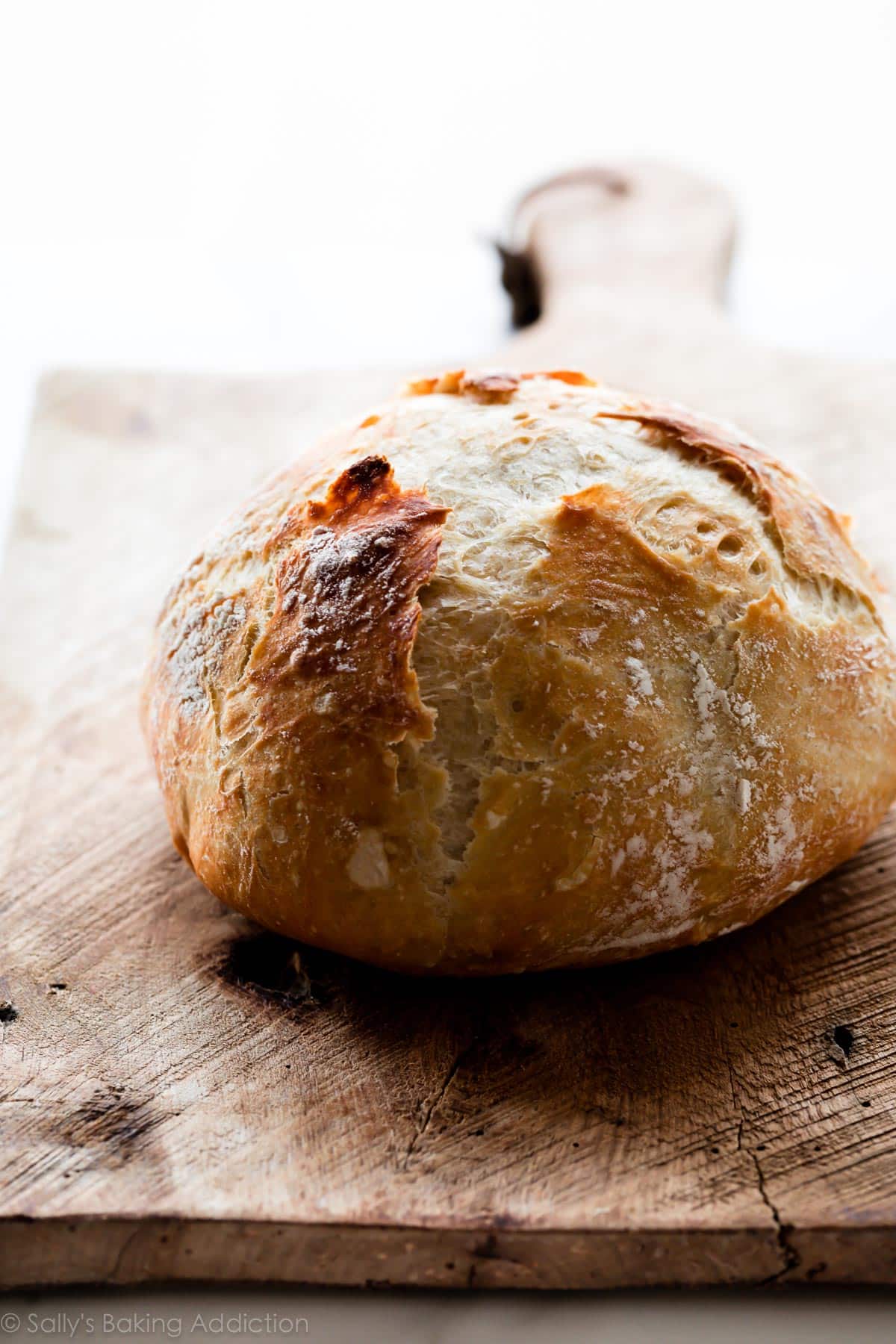
Welcome to your complete guide to Baking with Yeast.
Many of you have responded to a question I ask in my baking email series… what baking recipe intimidates you the most? A majority say yeast breads.
Baking with yeast used to intimidate me too. Something about yeast seems really scary! And, what’s worse, some yeast recipes are complicated and arduous. But once I began to understand that yeast is simply another ingredient in the bowl, my fears subsided. And if you begin with easy yeast recipes, your confidence builds.
Whether you’re a beginner baker or pro, it’s important to understand how yeast works. I urge you to read through this guide where I answer many common yeast questions. I wrote this in partnership with Red Star Yeast, so you can be confident the information is very helpful. I’ve worked with Red Star Yeast for nearly 7 years because it’s my preferred brand!
It’s time to tackle your fear of yeast and bread baking! 🙂
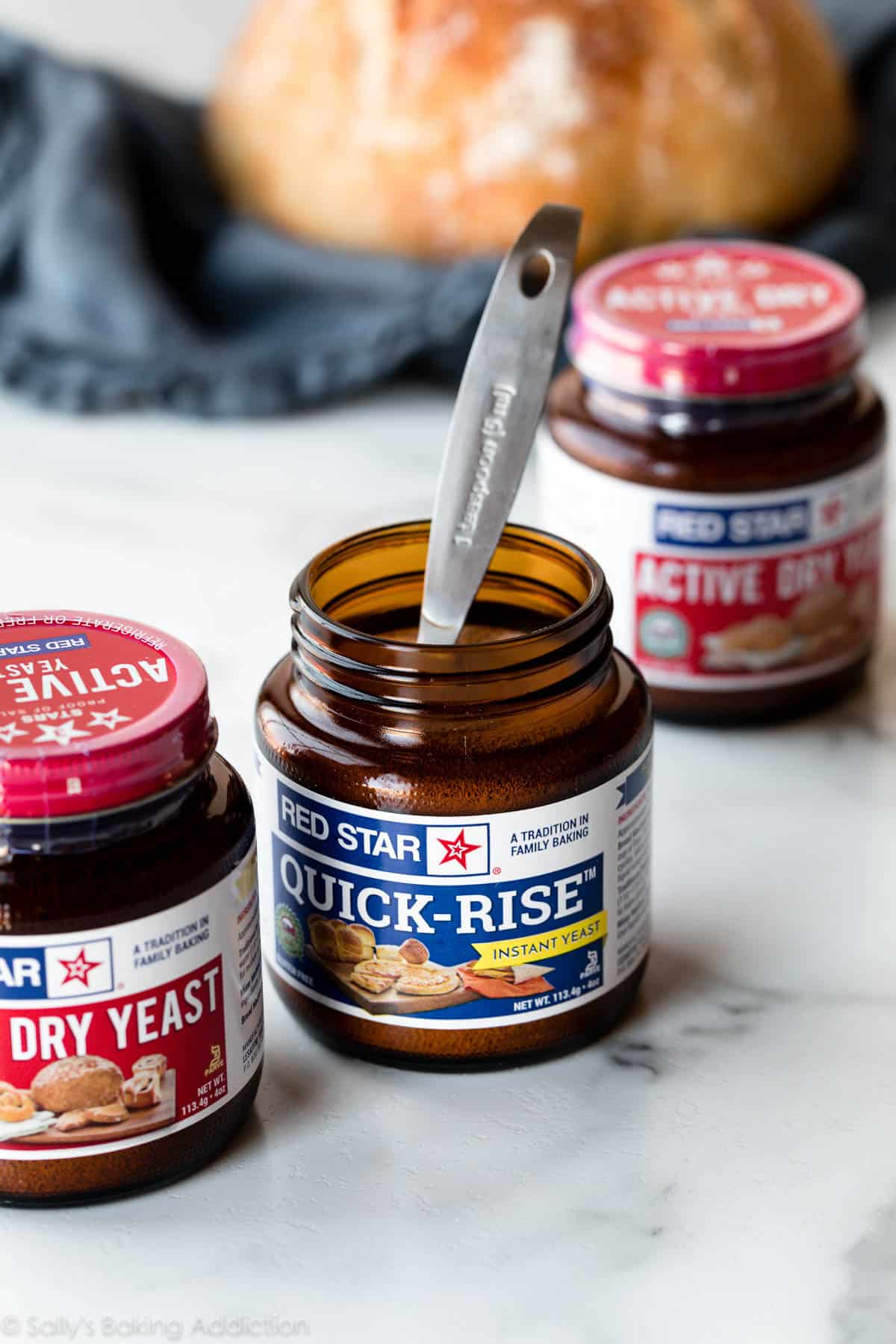
What is Yeast?
Yeast is a living organism. It needs food and moisture to thrive. There are 2 main forms of yeast: brewer’s yeast and baker’s yeast. Brewer’s yeast is used primarily in beer making and baker’s yeast is used in baking. Yeast feeds on sugar and converts it into alcohol and carbon dioxide through fermentation. Alcohol is useful in beer making and carbon dioxide is responsible for stretching and expanding the dough, something we see as the dough rises. Yeast fermentation also provides the flavor and texture you expect in yeast-raised recipes.
There are 2 Main Types of Baker’s Yeast
- Wet Yeast – Also known as Cake Yeast, Fresh Yeast, or Compressed Yeast.
- Dry Yeast – Sold as Active Dry and Instant Yeast.
Cake Yeast Vs Dry Yeast
Cake yeast is wet yeast sold in block or “cake” form. It’s active and highly perishable. To use cake yeast, crumble over dry ingredients or dissolve in the liquid used in the recipe. Today, cake yeast is only available in limited stores.
Dry yeast, on the other hand, has a longer shelf life because it’s been dried out. It’s granulated and sold in little packets or loose in a jar. It is in a dormant state and if the package isn’t opened yet, can be stored at room temperature. Dry yeast requires different liquid amounts and temperatures than cake yeast.
Here is a helpful cake yeast & dry yeast conversion table.
Types of Dry Yeast
Because it’s most common, we’re focusing on Dry Yeast in this Baking with Yeast Guide. There are two types of dry yeast available: Active Dry Yeast and Instant Yeast. They both require liquid to “wake” out of their dormant state.
- Active Dry Yeast
- Instant Yeast – Also known as Fast Rising Yeast or Fast Acting Yeast.
Red Star Platinum Yeast
This is, by far, my preferred yeast!! Platinum Yeast from Red Star is an instant yeast blended with natural dough improvers. These dough improvers are naturally occurring enzymes derived from protein in wheat flour. They strengthen the dough and build tolerance to variations in flour strength and the baking process (kneading, rising, etc.) As a result, the dough traps more of the leavening being produced by the yeast for an overall better rise and better volume in the finished baked good. Most of the yeast recipes on my website are made with Platinum Yeast from Red Star. It’s fantastic for yeast beginners.
Can I Substitute Active Dry Yeast for Instant Yeast and Vice Versa?
Yes. Active dry yeast has a moderate rate of rising and instant dry yeast has a faster rate of rising. Active dry and instant yeast can be used interchangeably in recipes (1:1); just keep an eye on your dough so it doesn’t rise too much.
Can I Store Dry Yeast in the Freezer?
Yes, you can store dry yeast in the freezer. The experts at Red Star Yeast actually recommended it! Place the yeast towards the back of the freezer so it’s not exposed to temperature changes when you open the door. To thaw, measure the amount you need and set it on the counter for 45-60 minutes before using. The colder it is, the longer it will take to “get going.”
Do I Refrigerate or Freeze Dry Yeast After Opening?
Dry yeast is perishable. Once your package is opened, the yeast must be refrigerated or frozen in an airtight container. Use within 4 months if refrigerated and 6 months if frozen.
What is Proofing Yeast?
Proofing dry yeast is sometimes a step in a recipe. This step is basically just “proving” that the yeast is alive and active. You dissolve the contents of the packet in warm water/milk with some sugar. After 5-10 minutes, the mixture should be foamy. If not, the yeast is dead and should be tossed. However, if used before the expiration date, this step isn’t really necessary with modern active dry or instant yeast. Still, some of recipes call for it, just to be extra certain the yeast is alive. (If using quality yeast, it usually is alive!)
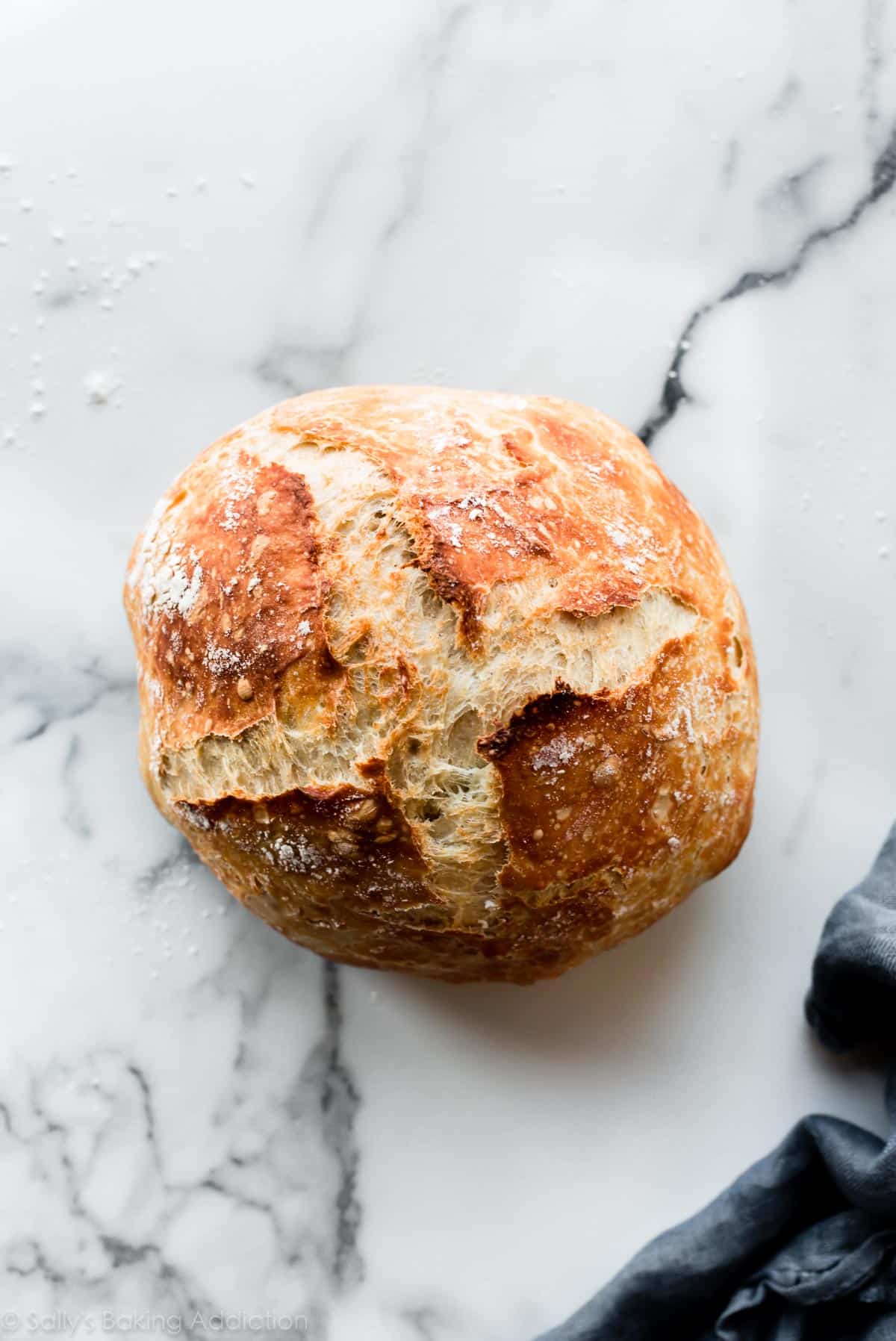
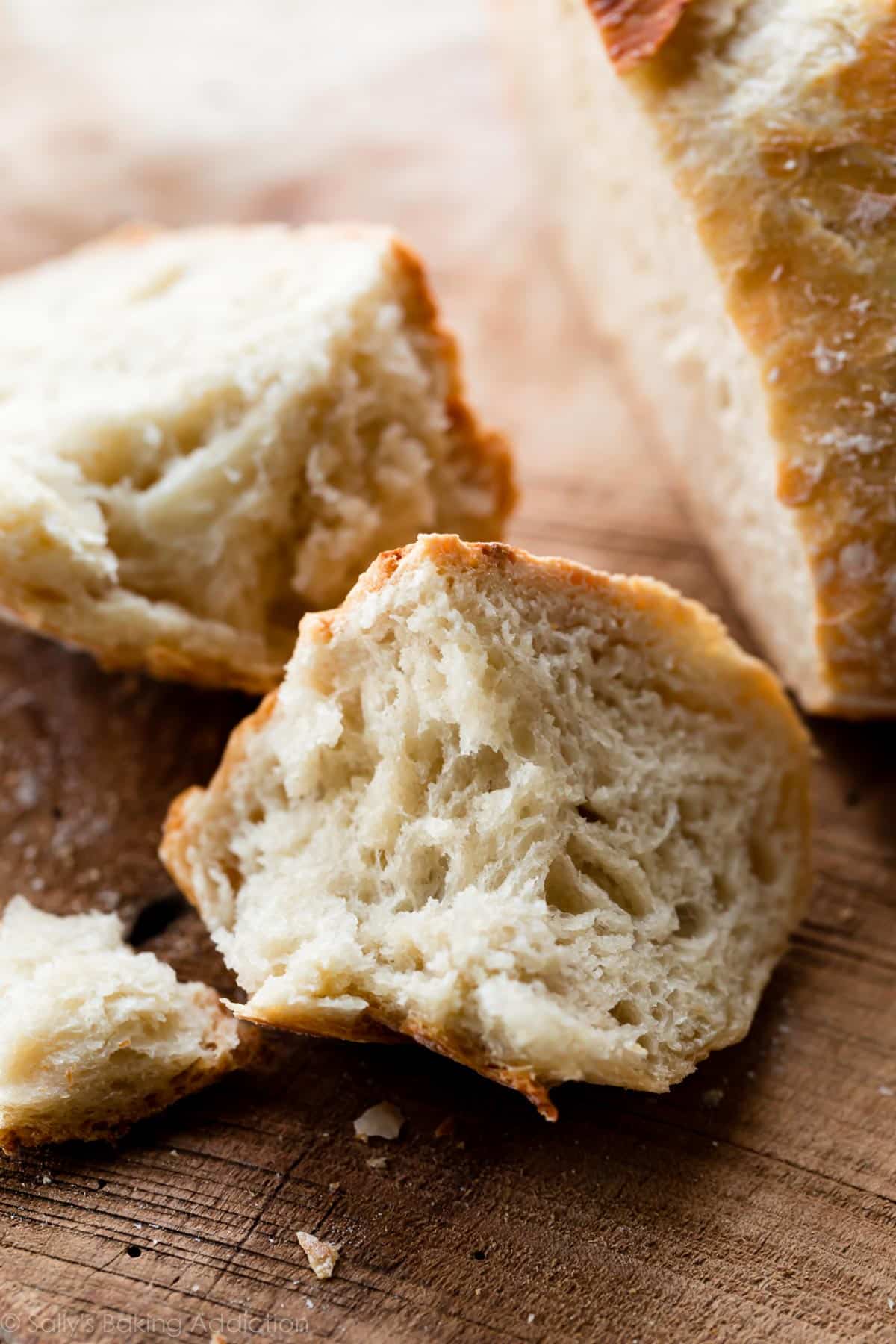
How Is Yeast Used in Baking?
When combined with liquid and sugar, yeast makes dough rise. Yeast, while also providing flavor, creates carbon dioxide in the dough. This stretches and expands it. Yeast thrives in warm temperature, which is why warm liquid is added to dough. However, yeast will begin to die in temperatures 135°F (57°C) or higher. A good rule of thumb: if it’s too hot to touch, it’s too hot for the yeast. Yeast is also effective in cooler temperatures, but it requires more time to expand the dough. Some bakers prefer a slower rise time because more flavor is produced in the process.
Where Should Dough Rise?
Cover and place dough in a warm draft-free place for as long as the recipe instructs. This crucial time is when the yeast ferments the sugar into carbon dioxide and alcohol. (See previous question.) The kitchen counter is fine, but if you’re pressed for time, you can speed up the rising process by placing the dough in the oven. Preheat the oven to 150°F (65°C), then immediately turn the oven off. Wait a few minutes, then place the dough in the bowl inside the oven with the oven door cracked open. This will be a warm environment for your dough to rise. After about 30 minutes, close the oven door to trap the air inside with the rising dough.
Dough can also rise in cooler temperatures, but the yeast activity slows down and the rise time extends. Here is more information on dough rising.
What if My Dough Isn’t Rising?
There are a few factors that prevent your dough from rising:
- Temperatures are too cold. Place dough in a warmer environment.
- Yeast is expired or dead. Start over with new yeast.
- Liquid in the dough was too hot, which killed the yeast. Start over with new dough.
- Too much flour or sugar in the dough. Be mindful of your measurements and remember that it’s ok for dough to be a little sticky. Don’t over-flour.
- Type of flour. Flours with higher protein content have superior dough (gluten) forming and rising properties. Here is more information on flour types.
- Kneading too little or too much.
How Do I Knead Dough?
Kneading dough is a common step in bread baking. You can knead dough with your hands or in a stand mixer. A stand mixer obviously makes the job shorter and easier, but kneading by hand is gratifying… and a great stress reliever too! I have a full tutorial with a video about how to knead dough that can help with this step.
Kneading the dough serves a couple purposes. First, it incorporates air into the dough. It also encourages the proteins in the flour and moisture in the dough to link together, forming a strong gluten network which is essential for retaining the gas produced by the yeast. Gluten is what makes bread deliciously chewy.
What is a Typical Yeast to Flour Ratio?
One packet of dry yeast (2 and 1/4 teaspoons) will raise up to 4 cups of flour.
What Does it Mean to Let Dough Rest?
It’s advantageous to let dough rest after working or shaping it. Cover the dough with a clean towel or plastic wrap and set it aside. This little “nap” allows the gluten to relax and settle, which lends to a more voluminous bread. A little rest also makes the dough easier to shape. So if you notice your dough is extremely elastic, cover and set it aside for 10-15 minutes, then return to shaping it.
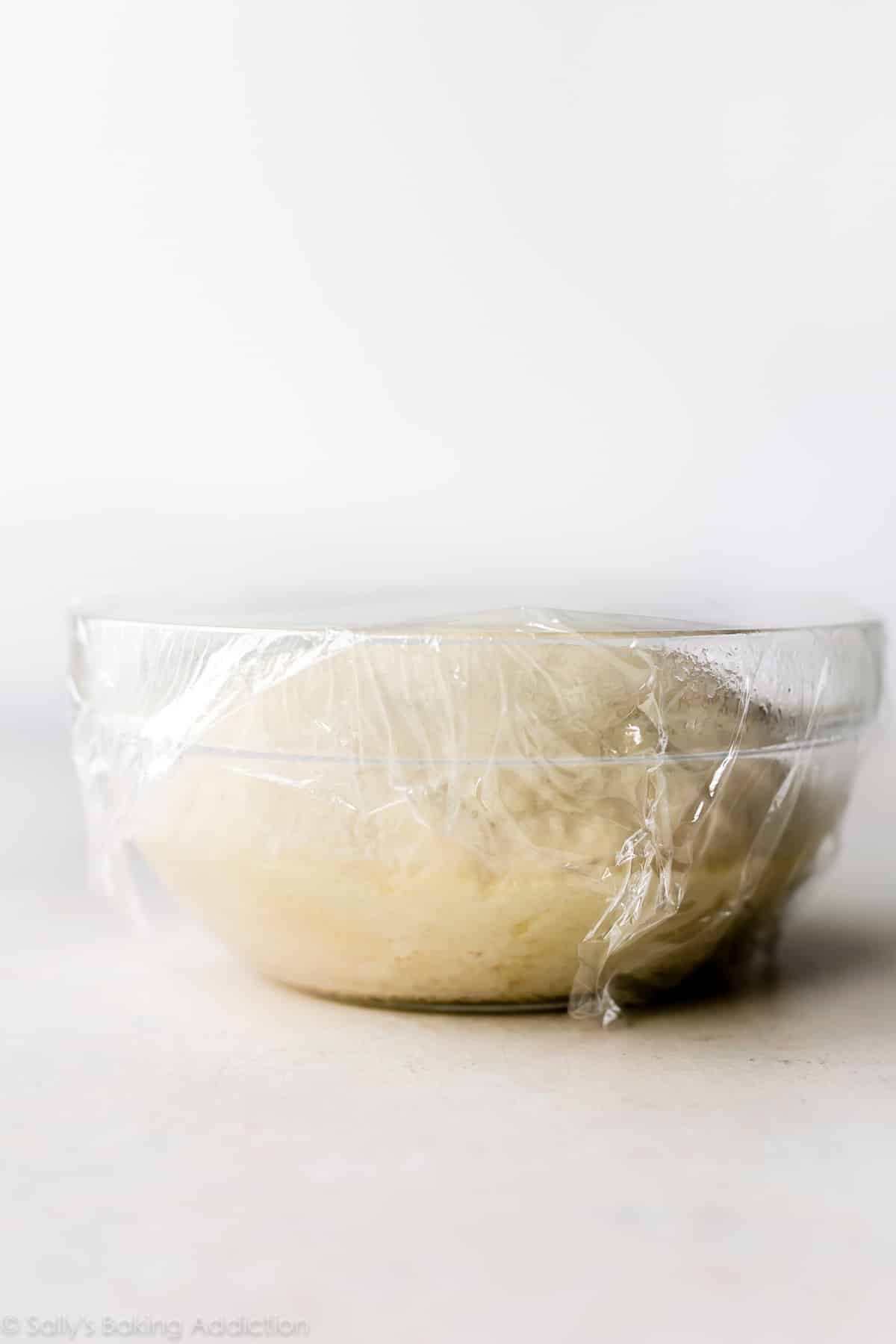
Where Do I Begin?
Now that you have a better grasp on baking with yeast, start with an easy recipe: No Knead Bread. (Pictured above without the cranberries and walnuts.) This no mixer, no knead bread recipe comes together in 1 bowl. The yeast requires at least 12 hours to raise the dough, so just let it sit on your counter. Very little hands-on work. It’s a great recipe to begin the day before. I also have a 4 ingredients homemade artisan bread that requires very little hands-on time.
More Favorite Easy Yeast Recipes:
- Cinnamon Rolls – Shaped yeast doughs, such as cinnamon rolls, Nutella babka, and dinner rolls, usually require 2 rises. This easy cinnamon rolls recipe skips 1 rise, so it cuts the time in half. I also have a recipe for traditional overnight cinnamon rolls.
- Flatbread Dough – Make thin crust style pizza with this 45 minute flatbread dough. My homemade pizza dough is also very easy, though it’s thicker and requires a slightly longer rise time. Both have great flavor.
- Homemade Bread Bowls – Pictured below. This is a very basic bread dough that you can flavor and use for many recipes. See the recipe notes.
Q: Was this guide helpful to you?
More Helpful Baking Tips
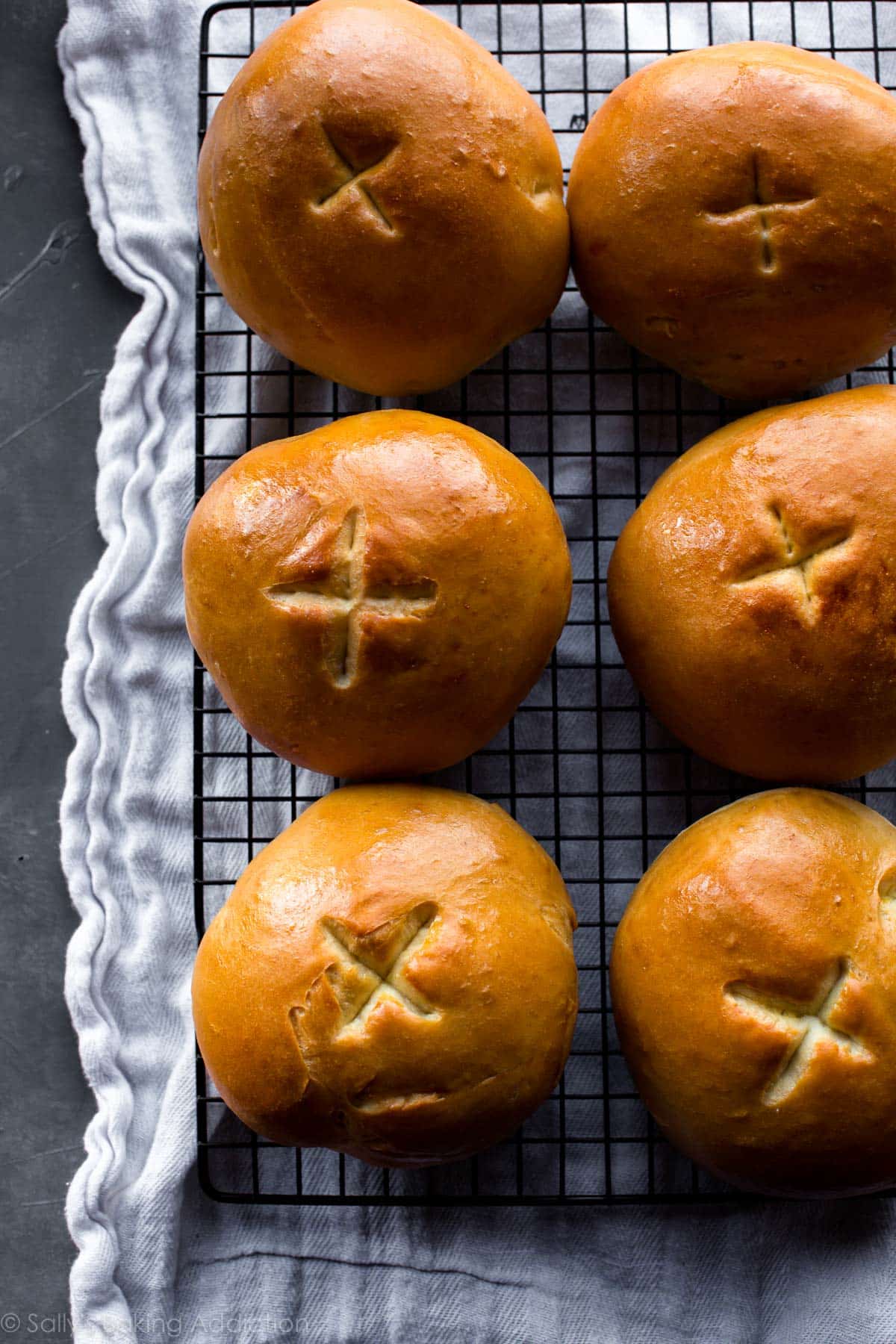


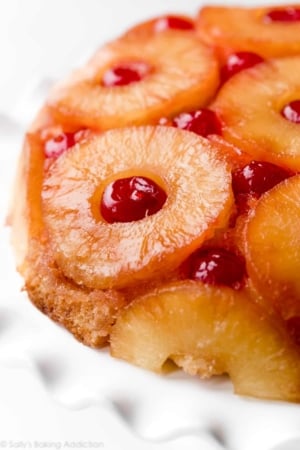
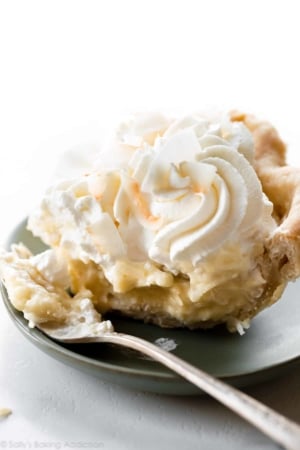

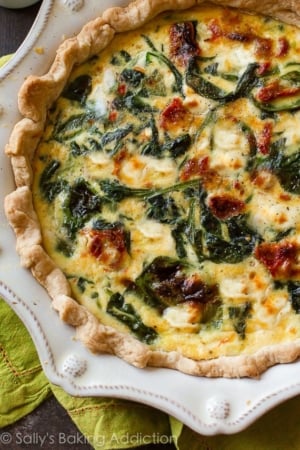
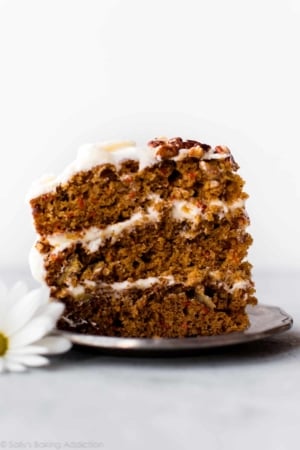












I am lucky enough to have a bread proofer. For sourdough, I usually set the temp to 72 degrees for overnight proofing. What temp would you suggest for proofing much shorter amounts of time like for your herb rolls? Thx!
Hi Michelle, what a great question. For a bread proofer, typically the temperature should be about 80-95°F (27-35°C).
Can I use an iron skillet when making this pizza?
Hi Rhonda! Our pizza dough will definitely work in a 10-12 inch skillet.
Hi Sally,
Thanks for the tips.
If I don’t have a stand mixer can I use my hands to mix/knead dough in any of your recipes? (Specifically looking at the bagels).
I really want to make bagels but the best tools I have are my hands at the moment.
Thanks!
Hi Paulina! Absolutely. See step 7 of our homemade bagels recipe: If you do not have a mixer, you can mix the dough together in a large bowl then knead by hand for 10-15 minutes.
I have tried several bread recipes but I can’t get the holes inside the finished baked loaf or the crunchy hard outside. I think the steam while cooking will help the outside. It rises, I’m careful when transferring to the baking sheet not to loose the air pockets but it still has a tight texture inside. Can you help with this?
Hi Kevin, it can certainly depend on the bread recipe you’re using, but in cases like our Homemade Artisan Bread, scoring the bread is key to allowing it to expand. Use a very sharp knife, kitchen shears, or a bread lame (recommended) to make a few large slashes. This is key! I hope this helps for next time!
Wish I could print your Working with Yeast Guide like with your recipes. I love your work!
I’m making this for the first time right now. Definitely a novice baker. You stress using a nonstick pan-what about using the silicone baking mat ? I bought the one you recommend. Thank you!
Hi Judy, happy to help! Which recipe are you referring to?
If using the oven method to let the yeast rise, how long does it typically take?
Hi Amanda! The time it takes dough to rise will always depend on the recipe – the volume of dough, the kind of dough, etc.
Thanks for your recipes and guidance! I’m just learning to bake yeasted bread am not sure how long to knead the dough in a stand mixer, and at what speed. Is there a rule of thumb? How should the dough look and feel once it’s properly kneaded? When recipes say to knead at low or medium speed, what does that mean? My mixer has 10 speeds.
Hi Louise, Every recipe is a little different but if you read the recipe instructions we will tell you how long it will take. For example it may say knead on low speed for 30 seconds, then add flour and knead for another 2 minutes. On a 10 speed mixer “low” is usually 2-3. We do try to describe how the dough should feel for each recipe (sticky, smooth, soft, etc) so be sure to read the full post before you begin. The more you practice the more confident you will become at making breads!
I made cinnamon rolls on Christmas Eve and froze one pan right after I rolled and sliced them. I took them out today and left them out to thaw. They are not rising even a little bit. What went wrong?
Hi Liz! How long have they been out? They could still be quite cold and that’s why they’re not rising – try a warm spot in your house to allow them to continue to rise next time 🙂
I have a sourdough starter. Can I use that in place of the yeast? If so, how much starter would be used?
Thank you!
Hi Beth, we haven’t tested our recipes with sour dough starters but let us know if you give it a try!
Hi,
I love your tips for baking with yeast.
Can we use bread machine yeast instead of active dry yeast when using hand-kneading recipes?
Hi Renee, Bread machine yeast is similar to instant yeast and can be used in recipes calling for active yeast. Just keep an eye on your dough so it doesn’t rise too much.
I always love the advice I get on this site. I am an avid cook, but a novice baker who learns something new every time I visit your site. These tips on using yeast are perfect to assuage my baking fears. Thanks Sally! What prompted my visit today? This weekend I will be making soft pretzel bites with my granddaughters.
I’m so glad to read it and you’re very welcome. I hope everyone enjoys the soft pretzel bites!
Can I substitute Half & Half for the yeast dinner rolls? Do I cut it with water?
Hi Linda, For the best results we recommend sticking with whole milk. We’ve never tried diluting half and half so can’t guarantee results, but let us know if you try it!
When I make cinnamon rolls, everything works well until after baking them. As they cool the rings separate. What do I need to do to keep them full, the rings stuck together?
Hi Neoma, If the dough rose but then shrunk, it’s possible they were over proofed. Over proofed dough will quickly collapse when it’s baked. It’s an easy fix if you ever decide to try them again.
I can not find the platinum in the store can I use the regular red star quick rise
Absolutely!
thank you so much for all your baking guides, I’m a beginner, it was really my dream to bake bread and cakes, now my dream came true through your recipes.
lots of cheers,
Emly
If I use instant red star yeast what are my hours in the first rising time? Does it need that extra 1 hr for the second rise?
Hi Stacey, we’re unsure which recipe you’re referring to, but usually when baking with red star yeast, you follow the same recipe instructions, the rise times may be slightly faster – keep an eye on the dough. Happy baking!
Im making your Glazed donut recipe (overnight), and i was wondering, will it make a difference that i used instant yeast? Like how much time do i leave it in the fridge overnight??
Hi Paris! For the glazed doughnuts, you can use instant yeast — the rise time is just a bit shorter, but you’re still okay to leave it in the fridge overnight. Just take them out in the morning and proceed with the next step. Hope you enjoy them!
I let me sandwich dough rise in the oven on the proofing setting on 85 degrees F and it more than doubled in size by an hour and a half. Should I use that as more of an indicator than time, or should I continue to let it rise?
Hi Elena! Use the size of the dough as the best indication – otherwise it could rise too much and deflate when baking.
Hi, I recently came across Instant Dry Yeast High Sugar. What does it mean by high Sugar? Can I use it interchangeably in any bread recipe calling for dry yeast? Please help me!
Hi Nilam, I’m unfamiliar with that product but wonder if it’s yeast that can withstand a lot of sugar in the dough. I assume you could use it interchangeably, but maybe check the product’s packaging or website for any possible information first.
Does anyone have any advice for baking with yeast at a higher altitude?
Hi Donna, I wish we could help, but have no experience baking at high altitude. Some readers have found this post helpful: https://www.kingarthurflour.com/learn/high-altitude-baking.html
My wife and I are loving the recipes but we have one consistent (albeit minor) problem. Our doughs always end up too wet. It’s easy to solve, I just add an extra 1-2 tbsp of flour before (hand) kneading, but I’m wondering there’s some explanation for this. We weigh our ingredients, so I think we’ve got enough flour. Today I didn’t even add extra flour, I just kneaded the wet dough as well as I could (stretch and slap method), and the end result looked pretty reasonable, although I also kneaded for longer than specified. What might I be missing here? We use a stand mixer if that matters…
Hi Alan, There are a lot of variables that go into the consistency of dough, from the brand of flour you use, even down to the weather and humidity in the air. There’s nothing wrong with adding just a little more flour to bring the dough into a less sticky and knead-able consistency as you have been doing!
Can you use too much yeast? I have an old family recipe that calls for 3 yeast packets for 8 cups of flour.
Some recipes call for proving the yeast in warm water and sugar. Some don’t. Is is ok to prove every time even if the recipe does not call for this to be done? If the recipe does not call for sugar, can proving be done in warm water alone?
Hi Elle, Proofing the yeast is not usually required when using instant yeast. Still, it doesn’t hurt and takes 5 minutes and you can prep your other dough ingredients as you wait, and we usually do! It can be done with just warm water and should still get foamy, but it may not be as bubbly as it would be with a pinch of sugar.
Hello! Whenever I make bread or brioche with either dry or fresh yeast, the end result always tastes ‘yeasty’ even though I stick to the recipe’s quantities and rising times….Stuff from a real baker never has that yeast taste. How do I get rid of that overly yeasty smell/taste? thanks!
Thanks for the tips, my buns wouldn’t rise and I didn’t realise that my yeast (while well in date) was dead. I’ll test my yeast next time…I’m determined to make my iced buns
Hi. I love baking bread! I discovered I am developing gluten intolerance but I’m determined to not cut it so drastically. That being said, I love your information here and I appreciate it a lot. I am definitely trying your nuts and fruits bread up there. Question please… As I’m also trying gluten free flours what kind of advice would you give me for the best yeast to flour ratio for gluten-free breads? Thanks.
Hi Buri, we don’t have professional expertise in gluten free baking, so can’t help much here. But luckily there are many sites out there with awesome gluten free baking recipes. We know some readers have had good luck using a 1:1 gluten free baking flour such as Bob’s Red Mill in our recipes. Here are all our naturally gluten free recipes if you’re interested!
What is the difference between instant dry yeast and quick rise instant yeast? The brands are westco instant dry yeast vs fleischmanns rapid rise instant yeast? I have a recipe calling for instant dry yeast. Can I use rapid rise instant yeast instead?
Hi Larissa! Quick rise and rapid rise are the same as instant – so yes, you can use them in a recipe that calls for instant dry yeast. Enjoy!
I was hoping for a Guide list. Like this: 1 tab yeast To 4 cups
2 tab yeast. To whatever many cups
I am a slow learner, sorry!
Hi Iris! It’s best to follow a recipe for best results, here are all of our yeast bread recipes if you’re interested!
I know that my home baking doesn’t have anything added that my husband isn’t able to eat on his very strict diet.
I have to use a mix of white and brown bread flours. However, although I can only make nice soft white only bread rolls I find other sorts of buns with mixed flour e.g. like bread/Chelsea/hot cross buns, are always too dense and not soft and squash y like bought ones. He is not allowed any dried fruits, currants, raisons etc but I add candied peel, cherries and spices. I usually put a tin of boiling water as a steam bath in the oven when I cook my bread at 200 – 220 fan.
How do I get them really soft and squashy please?
I am 79 years old and never made bread in my life. I tried the homemade Artisan bread recipe . It was easy and fool proof. The result came out better than I ever expected. Sally you are a bread genius! Now I will wear out my mixer with your other recipes.
Can I use an iron skillet when making this pizza?